Review: A Noise Within's HENRY V Zeroes in on the Steely Aspects of War
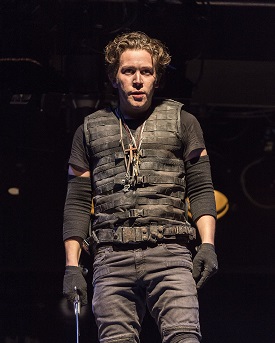
By the time Shakespeare gets to the last of his history plays concerning the Wars of the Roses*, HENRY V, the party boy who would be king has become a man. Gone are the indiscretions of youth seen in the earlier HENRY IV plays, which follow young Prince Hal on his escapades with Falstaff and the Eastcheap gang. When HENRY V opens, it is the responsibilities of a monarch that now weigh heavily on the new king's head, amid increasing tensions with France.
A Noise Within stages this epic war story for the first time and directors Julia Rodriguez-Elliot and Geoff Elliot have zeroed in on the play's steely aspects, heavily editing the text and removing nearly everything except the scenes that focus on war. It's a cold adaptation, one in which any appearance of the Eastcheap band from Henry's past feels like an interruption. Humor is in short supply.
The role of Chorus in HENRY V is always important. It is typically (but not always) performed by one individual who guides the audience through the play by setting up scenes and filling in the gaps. The job is to make sure the audience doesn't get lost while also acting as a humanizing factor. But in this production, the abridged text is broken up among many cast members and delivered brusquely. It feels more like a formality than a necessity and, consequently, it's easy to end up confused in this blunt-force fragmented tale.
Where the production moves into its trickiest territory is in the decision to give us a Henry (Rafael Goldstein) who is aloof and seemingly devoid of emotion. It's a valid choice to play up the militaristic side of his character rather than to glorify him as a hero but the usually charismatic actor comes off as subdued and distant here.
In two of Shakespeare's most memorable speeches, "Once More Unto the Breach" and the St. Crispin's Day monologue, Goldstein is placed high above and away from his men, which is counterintuitive to making a connection, however dazzling a picture it creates. We meet him wearing sunglasses and a sneer, armor bound to keep familiarity at bay.
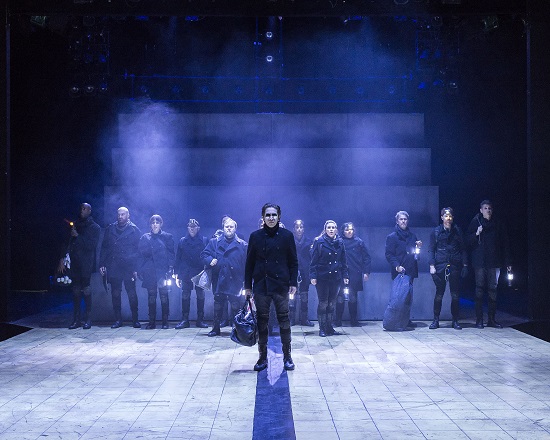
By the time we see something other than a warrior with his game face on, we are three quarters of the way through the play, too late to empathize with the unlikable leader we've come to know. Those seated close to the stage may have found some nuance in his interpretation but we could see none of it from our seats in the upper rows.
The imposing, oversized section of concrete stadium designed by Frederica Nascimento to contain the action serves this obdurate vision well. Ken Booth's austere lighting uses shadowy textures and conspicuous images of St. George's cross to add weight to Henry's declarations that everything he does is in service to God. We almost believe him, but mouthing prayers to the almighty with eyes wildly searching the heavens is conspicuously out of character for this restrained king.
The Dauphin (Kasey Mahaffy) is a hothead who meets his graphic and somewhat gratuitous demise front and center, the French princess (Ericka Soto) charmless, thanks to an unfortunate edit that has her learning English from a book in a 30-second scene without humor or sexual subtext. Most of the actors play multiples roles but aren't given much time to develop so a pack mentality pervades - the English are angry and sullen, the French are angry and haughty.
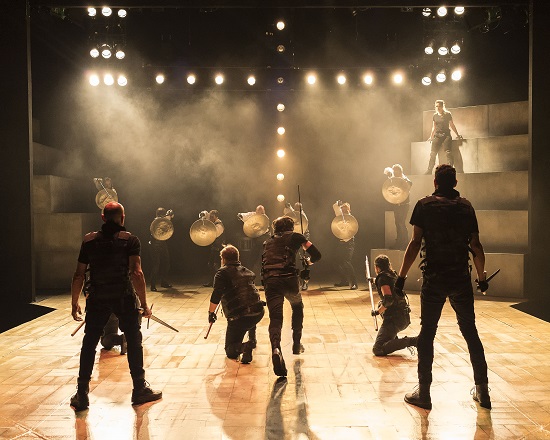
Kenneth R. Merckx Jr.'s blood-pumping fight choreography provides the pizzazz. There are enough clashes on the battlefield that two additional co-fight choreographers (Collin Bressie and Marc Leclerc) were engaged to accomplish the intricacies. Their work is impressive. Original music by Robert Oriol is layered in with live drums but the balance is off, with the pre-recorded sound overpowering moments on stage that don't earn the piercing impact of Oriol's score.
So, does it work? It depends on whether you're won over by this particular king. Reinventing Shakespeare's plays to make their messages relevant for today or finding smart and imaginative ways to tell the stories are what it's all about. I'm not a stickler when it comes to tradition but this version of the tale, striking as it is, left me (dare I say it) cold.
*Shakespeare wrote eight plays dealing with the Wars of the Roses during which time the crown passed back and forth between the House of York and the House of Lancaster. Henry VI, Parts 1, 2 & 3 and Richard III make up the second half of the story, but Shakespeare wrote this section first. He would later go back and write the first half of the story in Richard II, Henry IV Parts 1 & 2, and Henry V.
HENRY V
Feb. 4 - April 6, 2018
A Noise Within
3352 E Foothill Blvd, Pasadena, CA 91107
www.anoisewithin.org
Photo credit: Craig Schwartz
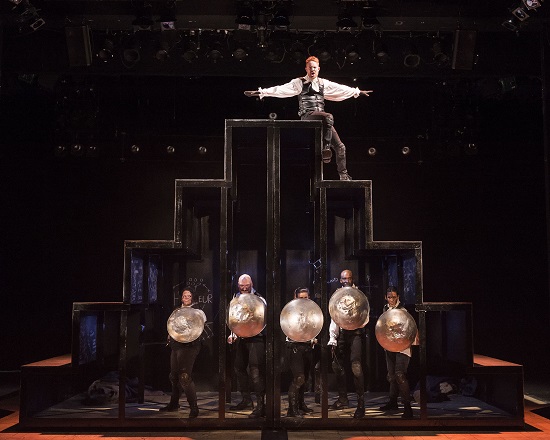
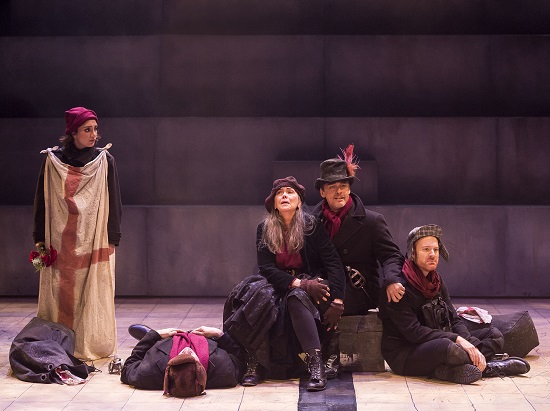
Frederick Stuart (Pistol), Kasey Mahaffy (Nym)

Reader Reviews

Videos


